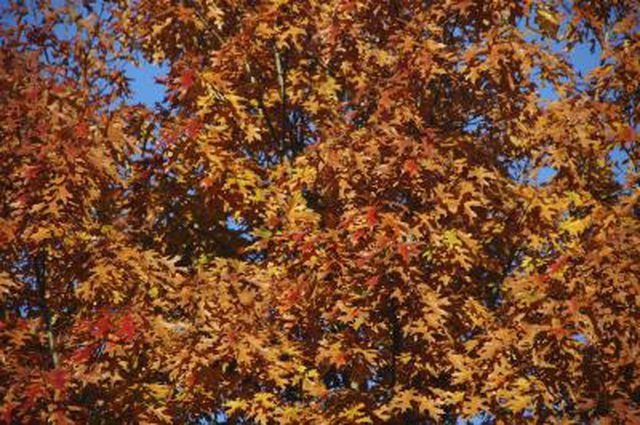Bulbs
Flower Basics
Flower Beds & Specialty Gardens
Flower Garden
Garden Furniture
Garden Gnomes
Garden Seeds
Garden Sheds
Garden Statues
Garden Tools & Supplies
Gardening Basics
Green & Organic
Groundcovers & Vines
Growing Annuals
Growing Basil
Growing Beans
Growing Berries
Growing Blueberries
Growing Cactus
Growing Corn
Growing Cotton
Growing Edibles
Growing Flowers
Growing Garlic
Growing Grapes
Growing Grass
Growing Herbs
Growing Jasmine
Growing Mint
Growing Mushrooms
Orchids
Growing Peanuts
Growing Perennials
Growing Plants
Growing Rosemary
Growing Roses
Growing Strawberries
Growing Sunflowers
Growing Thyme
Growing Tomatoes
Growing Tulips
Growing Vegetables
Herb Basics
Herb Garden
Indoor Growing
Landscaping Basics
Landscaping Patios
Landscaping Plants
Landscaping Shrubs
Landscaping Trees
Landscaping Walks & Pathways
Lawn Basics
Lawn Maintenance
Lawn Mowers
Lawn Ornaments
Lawn Planting
Lawn Tools
Outdoor Growing
Overall Landscape Planning
Pests, Weeds & Problems
Plant Basics
Rock Garden
Rose Garden
Shrubs
Soil
Specialty Gardens
Trees
Vegetable Garden
Yard Maintenance
How to Identify Florida Oak Trees
How to Identify Florida Oak Trees. The varieties of oak trees throughout the world are extensive. According to data from the Florida Forestry Association, there are around 19 different species of oak trees in Florida alone. Like all oak trees in the beech family, you can best identify species of Florida oaks by dividing the trees into particular...
The varieties of oak trees throughout the world are extensive. According to data from the Florida Forestry Association, there are around 19 different species of oak trees in Florida alone. Like all oak trees in the beech family, you can best identify species of Florida oaks by dividing the trees into particular groups of white and red (or black) oaks. Red and black oaks are very similar and in the case of Florida oak trees, are organized into one, single grouping to differentiate them from white oaks. Once you have determined whether your tree is a white or red Oak, consult Nancy P. Arny’s guide for identifying Florida oak trees. The guide, which Arny prepared for the school of Forest Resources and Conservation at the University of Florida, gives detailed and specific variations of each of the Florida oaks.
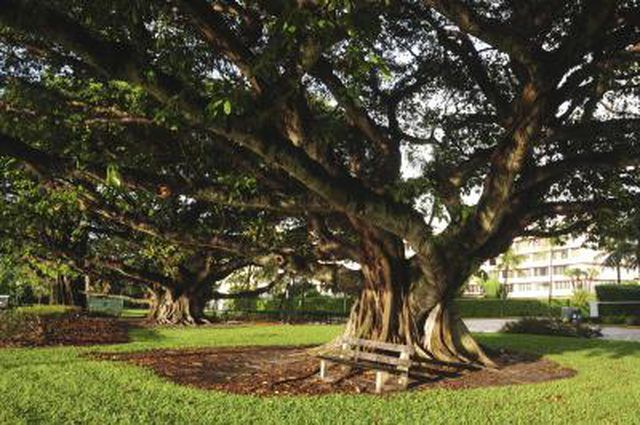
Things You'll Need
Florida oak tree
Notepad
Pen or pencil
Step 1
Examine the leaf and acorn of the particular tree in the fall, when it is fully mature.
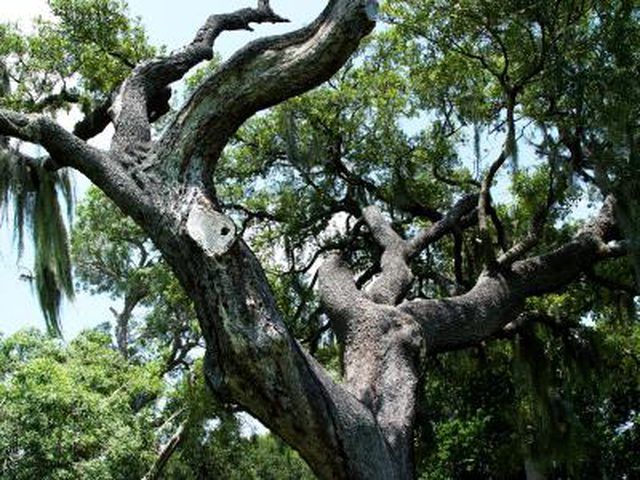
Step 2
Look at the way the leaves are arranged on the stem. If they line up in an alternate direction, where they're not all facing the same way, then you have identified one of the most common traits of an oak tree.

Step 3
Follow the instructions from Sections 2 and 3 below to determine whether you are evaluating a White Oak or a Red Oak tree.
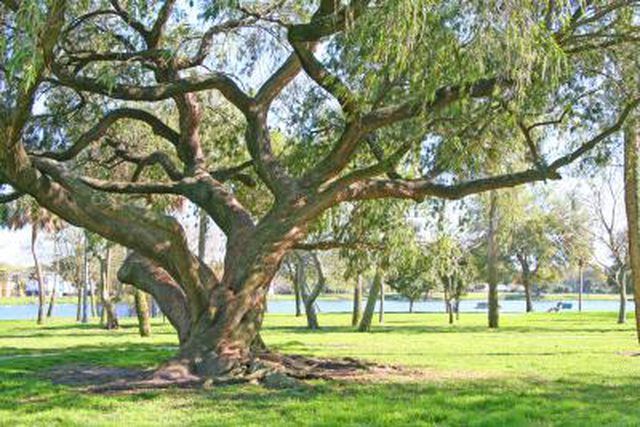
Step 1
Look at the tip of the leaf. If the tip is rounded and does not contain any sharp bristles or points, you may be looking at a White Oak leaf.

Step 2
Examine the tree’s acorn. A White Oak acorn feels very smooth under the cap.
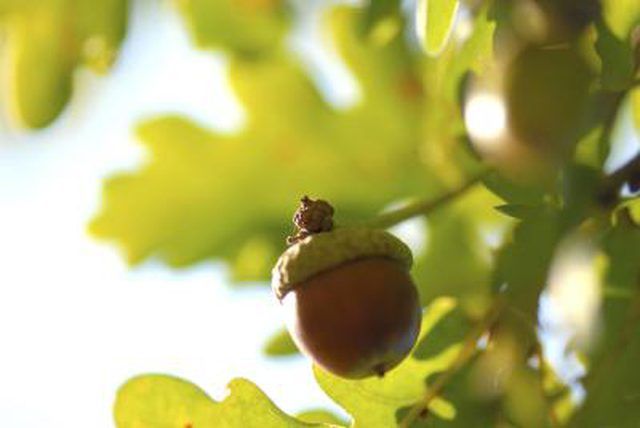
Step 3
Taste the leaf or acorn. The leaf and acorn of a White Oak should be sweet, especially in the fall when the leaf and acorn are mature.
Step 4
If the tree has all the traits of a White Oak, you have now narrowed the list of 19 possible Florida oak trees down to a manageable eight possible oaks. Consult Arny’s guide for identifying Florida oak trees. You will be looking at the following species of oaks: Bluff, Chapman, Chinkapin, Live, Overcup, Post, Swamp Chestnut, and White.

Step 1
Look at the tip of the leaf. If it is pointed, sharp or contains bristles, you have most likely identified a Red Oak leaf.
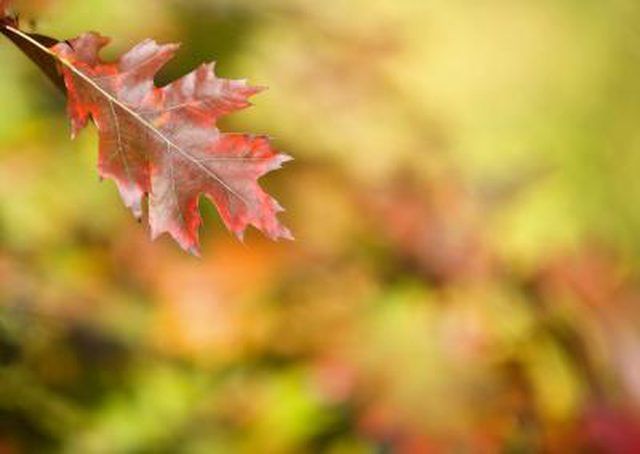
Step 2
Examine the tree’s acorn. Unlike the white Oak group, the red Oak group’s acorn will, according to Arny, "exhibit wooly or silky inner linings in a tough outer shell."
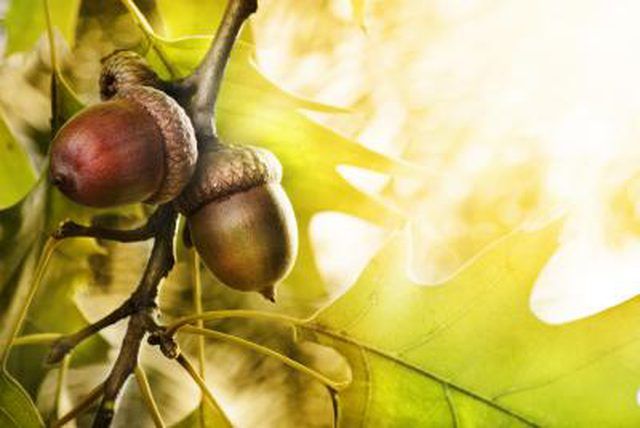
Step 3
Taste the leaf or acorn. If the taste is bitter and unpleasant, you most likely have identified a Red Oak leaf or acorn.
Step 4
Consult Arny’s guide for identifying Florida Oak trees. You will be looking at the following species of oaks: Black, Blackjack, Bluejack, Laurel, Myrtle, Shumard, Southern Red, Swamp Red, Turkey, Water and Willow.
